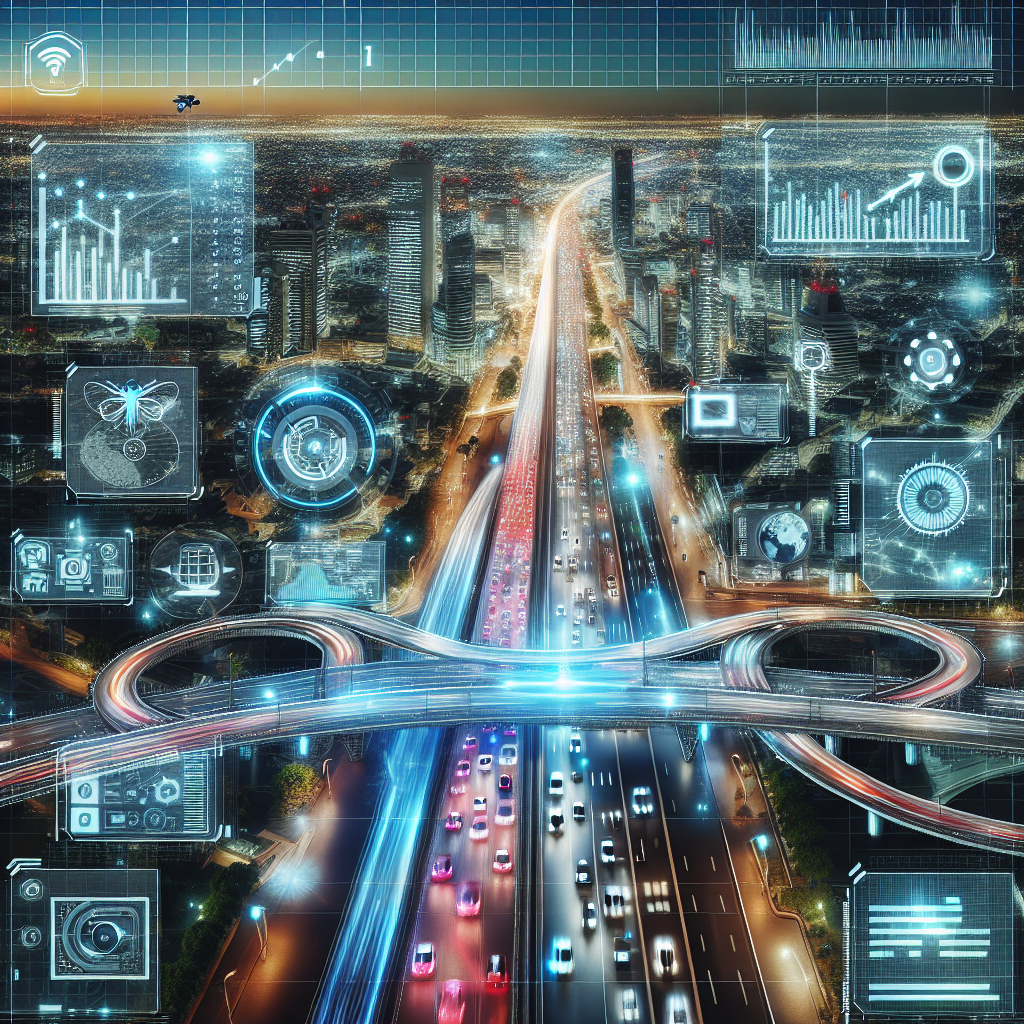Introduction to AI in Traffic Monitoring
Artificial Intelligence (AI) is profoundly transforming numerous sectors, and traffic management is no exception. With the increasing complexity of urban transport systems, AI offers innovative solutions for predictive traffic monitoring that enable cities to optimize mobility and efficiently manage congestion.
The Role of AI in Traffic Prediction
AI algorithms analyze vast amounts of traffic data to generate insights and predictions about traffic patterns. These predictions are crucial for various applications:
- Real-time Traffic Management: AI systems can adjust traffic signals and reroute traffic based on real-time data, reducing congestion.
- Accident Prediction: By analyzing historical data and current conditions, AI can foresee high-risk areas, allowing for preventive measures.
- Public Transport Optimization: AI helps in determining the best routes and schedules for public transport, based on expected traffic conditions.
Technologies Powering AI Traffic Monitoring
Several technologies underpin AI’s capabilities in traffic monitoring:
- Machine Learning: This technology allows AI systems to learn from data patterns and improve their predictions over time.
- Computer Vision: AI utilizes cameras and sensors to analyze vehicle movement and traffic flow, enhancing data collection.
- Big Data Analytics: AI processes large datasets from various sources, such as GPS signals and historical traffic reports, to deliver actionable insights.
Benefits of AI in Traffic Monitoring
Implementing AI in predictive traffic monitoring presents numerous advantages:
- Enhanced Traffic Flow: AI systems can predict and alleviate bottlenecks, ensuring smoother traffic flow.
- Reduction of Congestion: By optimizing traffic signals and routing, AI decreases idle time on the roads, contributing to lower emissions.
- Improved Safety: Predictive analytics helps reduce the likelihood of accidents, enhancing overall road safety.
Challenges and Considerations
While promising, the integration of AI in traffic monitoring also faces challenges:
- Data Privacy: Collecting and processing traffic data must respect user privacy and legal standards.
- Infrastructure Investments: Implementing AI systems requires substantial initial investments in technology and infrastructure.
- Dependence on Data Quality: The effectiveness of AI predictions relies heavily on the quality of the data collected.
Conclusion
AI in predictive traffic monitoring is set to revolutionize how cities manage their transport systems. By harnessing advanced technologies and data analytics, cities can improve traffic flow, enhance safety, and provide better mobility solutions for their residents. As these technologies continue to evolve, the role of AI in making urban transport smarter and more efficient will only grow stronger.

Leave a Reply